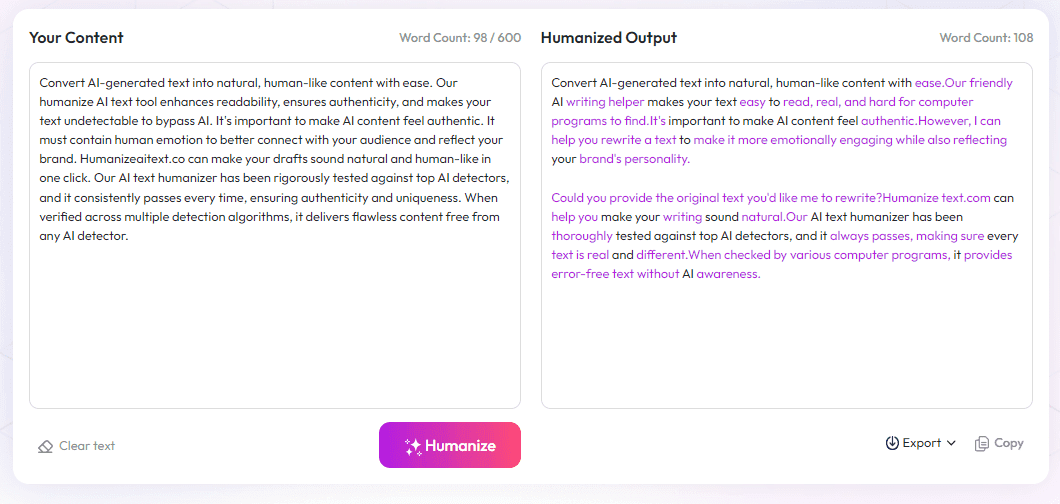Table of Contents
I get it—you're tired of the same old ways of publishing content and wonder if there's a better way. Maybe you feel stuck relying on centralized systems that can be slow or prone to control. Keep reading—and you might find out how moving to a more shared, open format can make a big difference for everyone involved.
If you stick with me, I’ll show you simple steps to build and benefit from decentralized publishing models, plus some real-world examples. This approach can help you share your work more freely, manage it better, and even save time.
Let’s just say, exploring decentralization could be the change you need—and it’s easier than you might think.
Key Takeaways
Key Takeaways
- Decentralized publishing transfers control from big companies to communities, giving creators more say and earnings. Using blockchain or peer-to-peer tech makes content transparent and fair. Community voting and smart contracts help manage rights and rewards, making the system more trustworthy and scalable. This setup reduces reliance on single servers and censorship, opening new ways for creators to make money and reach audiences cheaply.
- Adopting decentralized models helps creators keep more control and money, while offering better protection against censorship. These platforms can handle large audiences and support new revenue ideas like tokens and micropayments. They’re more resilient, allowing content to stay available even if parts of the network go offline. This approach encourages community involvement and can lead to bigger, more engaged audiences.
- Build a decentralized publishing system by choosing the right tech, creating clear content and payment rules, and involving your community. Use smart contracts for royalty payments, set up governance through voting, and promote transparency. Incorporate existing tools like DeFi for monetization and plan your strategy carefully. Successful examples show that a mix of good tech and active community is key to growth and sustainability.
- Maintaining quality in a decentralized setup depends on clear rules, community trust, and moderation tools like reputation systems and voting. Regular updates based on feedback and third-party checks help ensure standards. Transparency and open discussions build trust, making the platform reliable for all users without relying on central authorities.
- Decentralized and traditional publishing differ mainly in control and costs. Centralized platforms often have gatekeeping, while decentralized ones share control, reducing shutdown risks. Decentralized models can be cheaper and support new ways to earn money, but they need good moderation and trust measures. Choosing between them depends on your goals around control, quality, and community involvement.
- For success, decentralized projects need active communities, strong tech infrastructure like IPFS, flexible governance, and clear legal rules. Reaching large audiences and offering incentives like tokens motivate participation. Monitoring growth and adapting helps maintain relevance. Examples from music, news, and research show that engaging users and balancing regulation with openness drive long-term growth.
- Different sectors show how decentralization works: musicians use Audius, journalists try Civil, researchers lean on ResearchCoin, and creators on Minds. These platforms often combine tech, community, and clear rules to let creators own and share their work more freely. Such platforms serve niche needs well and help build direct connections with audiences, encouraging more people to join and contribute.
- Start by reviewing your current content, then pick suitable blockchain or peer-to-peer tools like IPFS or Arweave. Develop rules for content and community roles, set up smart contracts for payments, and engage your audience early. Use tokens and voting to encourage involvement, and educate your team about decentralization. Learning from existing platforms helps you plan a smooth transition that saves costs and boosts control over your work.

1. How to Build a Decentralized Publishing System
Decentralized publishing models are changing the way content is created, shared, and monetized, shifting power from a few central authorities to a broad network of participants. To build such a system, start by choosing the right technological foundation, such as blockchain or peer-to-peer networks, which ensure transparency and control for everyone involved.
Next, establish clear protocols for content submission, review, and distribution, making sure they promote openness and fairness. Incorporate smart contracts that automate royalties and rights management, so creators are paid accurately and promptly, fostering trust among contributors.
Implement community governance mechanisms, like voting or consensus models, allowing users to participate in decision-making about content standards and platform rules. Tools like decentralized identity (DID) solutions can also authenticate users without relying on a central authority, boosting security and privacy.
Don't forget about scalability—your system should handle growth in users and content without slowing down or increasing costs excessively. Platforms like the decentralized Media OS reaching over 450 million monthly users suggest that a well-structured, community-driven approach can scale significantly.
Finally, consider integrating existing decentralized finance (DeFi) tools to support monetization, such as tokenized rewards or staking. Based on market trends, the DeFi sector will grow from USD 30 billion in 2024 to over USD 42 billion in 2025, indicating a robust ecosystem to tap into for sustainable content platforms.
2. Key Benefits of Using Decentralized Publishing Models
One of the biggest perks is giving content creators more control over their work and earnings, bypassing traditional gatekeepers who often take large cuts or impose strict restrictions. This shift empowers authors, journalists, and artists to share their work directly with audiences, often with higher profit margins.
Decentralized models enhance transparency—since content distribution happens across multiple nodes, there’s less chance of censorship or manipulation, which is especially important for sensitive or controversial topics.
They also offer resilience: if one node or participant goes offline, the content remains accessible through other parts of the network, reducing reliance on single points of failure. Plus, community governance means users can vote on platform policies, creating a democratic environment for content standards.
Adopting decentralized publishing can open new revenue streams—like token-based micropayments, royalties managed through smart contracts, or staking mechanisms—allowing creators to monetize in innovative ways. The growth in decentralized finance (DeFi) and its projected CAGR of 46.8% from 2025 to 2034 supports this expanding ecosystem.
Furthermore, networks such as those reaching over 1 billion users demonstrate how decentralized ecosystems can tap into massive audiences with lower operating costs, enhancing profitability for publishers and creators alike.
3. Practical Ways to Implement Decentralized Publishing
Start by selecting a blockchain platform or peer-to-peer network suitable for content sharing—Ethereum, Binance Smart Chain, or specialized platforms like IPFS are popular choices. These technologies provide the backbone for transparent, tamper-proof content management.
Develop standardized protocols for content submission and curation that promote open participation while maintaining quality. Platforms like decentralized ID solutions help verify user identities without central oversight, which is key to building trust.
Create rewards and payment mechanisms using smart contracts that automatically distribute royalties—this cuts down delays and disputes, keeping creators motivated. A decentralized media OS that reaches over 450 million monthly users demonstrates how rewarding contributors can fuel network growth.
Involve your community through governance tokens or voting systems, allowing participants to influence platform policies or content standards. This democratic approach encourages engagement and shared ownership, essential for sustainability.
Utilize existing tools like decentralized exchanges (DEXs) and DeFi protocols to facilitate monetization, such as token staking or liquidity pools. With the TVL in DeFi protocols reaching over USD 123 billion in 2025, there's a clear appetite and infrastructure to support financially sustainable content ecosystems.
To go a step further, integrate content distribution channels with networks like the decentralized Media OS to reach a broader audience while maintaining low operating costs and high margins.

4. Managing Quality and Governance in Decentralized Publishing
Keeping quality high in a decentralized publishing system depends on creating transparent content standards and community-driven moderation tools.
Implement reputation systems where active and reliable contributors gain more influence, helping to maintain content integrity.
Use decentralized voting mechanisms to let users flag low-quality or harmful content, which encourages collective oversight without central authority.
Regularly update and refine platform rules based on community feedback to keep governance relevant and effective.
Incorporate auditing processes, possibly through third-party validators, to ensure compliance with legal and ethical standards.
This approach requires balancing open participation with effective oversight, but tools like quadratic voting and token-weighted decisions can help.
Decentralized governance models, such as those used by platforms like **Mirror** or **Decentraland**, show how community input influences the platform's evolution.
Setting clear content policies and providing accessible channels for feedback can foster trust and accountability among contributors and consumers alike.
5. Comparing Decentralized and Centralized Publishing Approaches
Decentralized and centralized publishing differ mainly in control, costs, and risk management.
Centralized platforms, like traditional publishers or social media giants, often have strict gatekeeping, which can limit diversity but ensure consistent quality.
Decentralized models spread control across many users, decreasing single points of failure and censorship but potentially leading to variable quality.
On the upside, decentralized systems tend to have lower operational costs and better resilience against shutdowns or censorship efforts.
However, they face challenges in moderation and establishing trust, especially with unverified content or malicious actors.
From a financial standpoint, decentralized publishing can generate new revenue streams through tokens, micropayments, or staking, which are less accessible in traditional models.
Looking at example platforms like **LBRY** or **###Meta** (formerly Facebook as a decentralized social hub), you can see how decentralization can push the boundaries of content control and profit sharing.
While centralized publishers often rely on contracts and proprietary algorithms, decentralized ones promote open standards and community involvement.
Understanding these differences helps content creators and publishers choose the right approach based on their goals, resources, and risk appetite.
6. What Conditions Contribute to Successful Decentralized Publishing
Increased adoption and ecosystem maturity are key drivers for success in decentralized publishing projects.
You need a strong community of users willing to create, curate, and support the content ecosystem.
Robust technological infrastructure, including scalable networks such as **IPFS** or **Arweave**, helps handle growth without compromising speed or cost.
Effective governance models that involve stakeholders and enable flexible decision-making keep the platform aligned with user needs.
Critical mass in audience reach, like platforms already serving hundreds of millions—such as the decentralized Media OS reaching over 450 million users—solidifies platform value.
Financial incentives like token rewards or staking can motivate participation and loyalty among creators and consumers.
Legal clarity around rights, licensing, and jurisdictional issues supports long-term sustainability.
Examples from sectors like music, video, and academic publishing show that combining technology, community, and clear policies results in solid growth.
Finally, adapting quickly to market feedback and emerging trends helps maintain relevance, as seen with the explosive growth of DeFi, which now manages over USD 123 billion in assets.
7. Examples of Decentralized Publishing in Different Sectors
In the arts, platforms like **Audius** let musicians publish and monetize their tracks without traditional labels.
The news industry sees outlets experimenting with decentralized solutions, such as **Civil**, where journalists maintain more control over their content.
Academic publishing is starting to embrace decentralized models through projects like **ResearchCoin**, supporting open access and transparent peer review.
In entertainment, projects like **Minds** combine social networking with decentralized content sharing, making rewards more accessible.
Publishing in the book world is also shifting thanks to platform options like **LBRY** or **KDP**, which offer alternative revenue streams and ownership rights.
The impact is especially noticeable in niche communities—think fandoms or fan fiction—driven by blockchain-enabled platforms that foster direct engagement.
Across sectors, success stories often involve a mix of innovative technology, vibrant communities, and clear governance structures.
As decentralization scales, expect more tailored and sector-specific platforms to emerge, serving specialized content markets with higher control for creators.
To get inspiration on building your own decentralized project, look into how companies leverage **DeFi** tools for funding and monetization, like staking tokens or liquidity pools.
8. Steps to Adopt a Decentralized Publishing Model in Your Organization
Start by assessing your current content and revenue models—identify areas that could benefit from decentralization, like rights management or funding.
Research suitable blockchain or peer-to-peer platforms that align with your goals, such as **IPFS**, **Arweave**, or dedicated decentralized publishing tools.
Create a clear plan for roles, including how to onboard contributors, reviewers, and community members who will govern or curate content.
Implement smart contracts for rights, royalties, and content licensing to automate payments and protect creator rights.
Engage your audience early using beta programs or community forums, and gather feedback to fine-tune governance processes.
Build or adopt ecosystem tools like token systems, voting mechanisms, and analytics dashboards to incentivize participation and track growth.
Invest in education for your team and users about decentralized concepts and best practices to foster trust and understanding.
Finally, align legal frameworks with your decentralization approach by consulting legal experts on rights, privacy, and jurisdiction issues.
Case studies from platforms like **Publish0x** or **Mirror** demonstrate how early adopters have successfully transitioned to decentralized publishing models, often helping them lower costs and increase control over their content output.
FAQs
Begin by identifying platforms that support decentralization, set clear governance policies, and involve community members in content curation to create a transparent and resilient publishing environment.
Decentralized publishing enhances transparency, reduces censorship, and empowers contributors, making content more trustworthy and resilient against single points of failure or control.
Start by adopting blockchain or peer-to-peer platforms, set clear governance rules, and involve community members to oversee content quality and decision-making processes.



